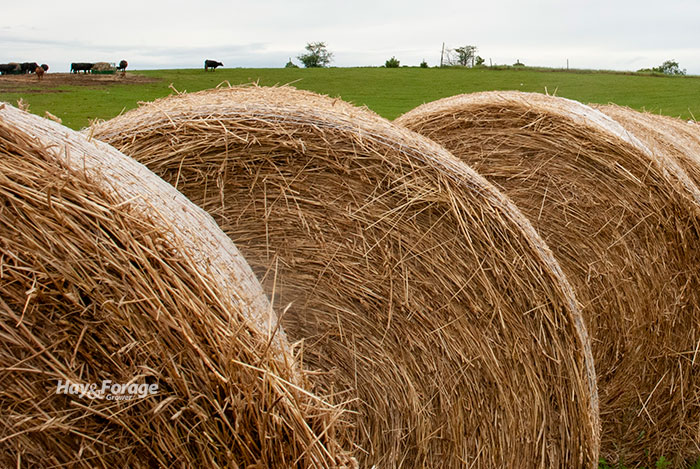Have a hay inventory budget this year |
| By Amber Friedrichsen, Associate Editor |
|
|
|
Now that fall is upon us, it is time to plan for winter feeding. Producers who transition from grazing livestock to feeding hay must be equipped with enough bales at optimal forage quality to uphold operations throughout the winter. Rocky Lemus, extension forage specialist with Mississippi State University, says winter feeding can account for more than 50% of the annual costs on a beef operation. Whether producers purchase hay or bale it themselves, he recommends creating a hay inventory budget to mitigate rising costs. Understand nutrient needs. The primary considerations of a hay inventory budget are a herd’s nutritional requirements and dry matter intake. These values depend on the class of livestock and animals’ stage of growth and reproduction. For example, a dry cow needs less crude protein and energy than its lactating counterparts, and thus needs less hay. “A general assumption is that a cow will eat 2% to 3% of its body weight in dry matter per day,” Lemus states. “The number of animals times their average weight times their intake will give an approximate amount of feed needed per day.” Forage quality and moisture content may also impact hay consumption. If forage has elevated levels of neutral detergent fiber (NDF), animals will need more hay to meet their demands; however, NDF is difficult to digest and can limit feed intake. Further, if hay is high in moisture, cattle will need more forage to hit their dry matter targets. Calculate hay quantity. Multiply how much hay is needed per animal per day by the number of days in the feeding period. This duration will range by region and climactic conditions, as well as if cattle graze winter annuals. Nonetheless, add an emergency surplus to the total to ensure adequate supplies. “An average surplus should be about 20% to 30% of the hay needed for your winter feeding cycle,” Lemus advises. “The extra bales of hay will allow us to make the necessary adjustments instead of having to provide expensive cattle feed rations or commodity feed.” Factor in bale weight. A hay inventory budget must account for bale weight and type of bale. Round bales offer handling advantages, but individual bale weights vary. Lemus suggests weighing several bales and taking an average weight to make inventory decisions. Moreover, round bales of baleage may be much heavier because of a greater moisture content, but they will contain less dry matter. “If you have a bale that weighs 1,000 pounds but it has a 20% moisture content, then the actual weight of the bale is 800 pounds on a dry matter basis,” Lemus explains. “Knowing this information will help you determine how many bales will be needed for the feeding season.” Limit hay waste. To maximize feed efficiency, minimize hay loss as much as possible. Losses can occur as a result of trampling, manure contamination, and animal refusal. One solution is to utilize cone or ring feeders as opposed to putting bales on the ground to prevent excess hay from being wasted. “Keep in mind that cattle waste a significant amount of hay when given free choice, which means more in your budget,” Lemus states. “Feeding hay in the winter can be simple if you have a solid feeding plan. Taking the time now to ensure you have enough hay to last the winter can help save time and money in the long run,” he concludes.  Amber Friedrichsen Amber Friedrichsen served as the 2021 and 2022 Hay & Forage Grower summer editorial intern. She currently attends Iowa State University where she is majoring in agricultural communications and agronomy. |

